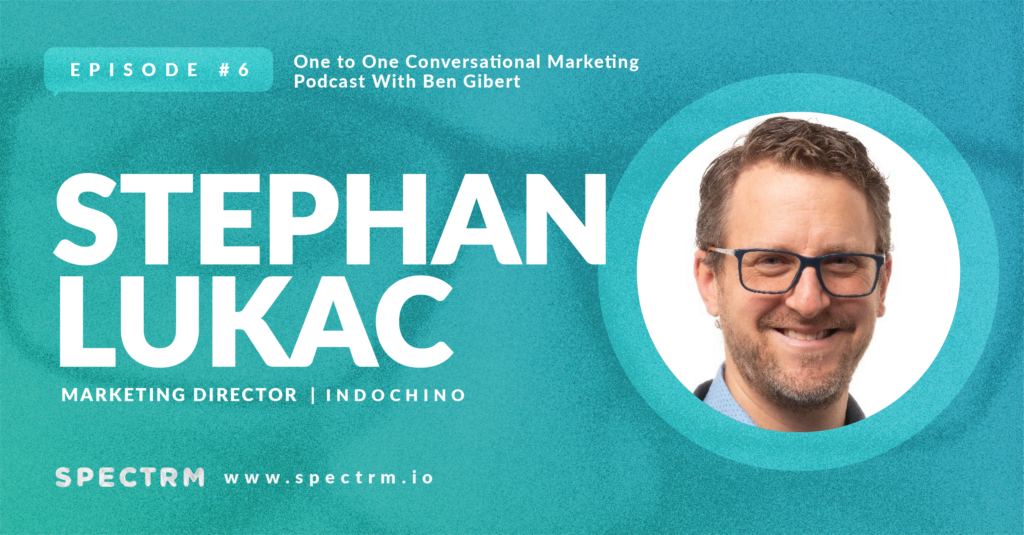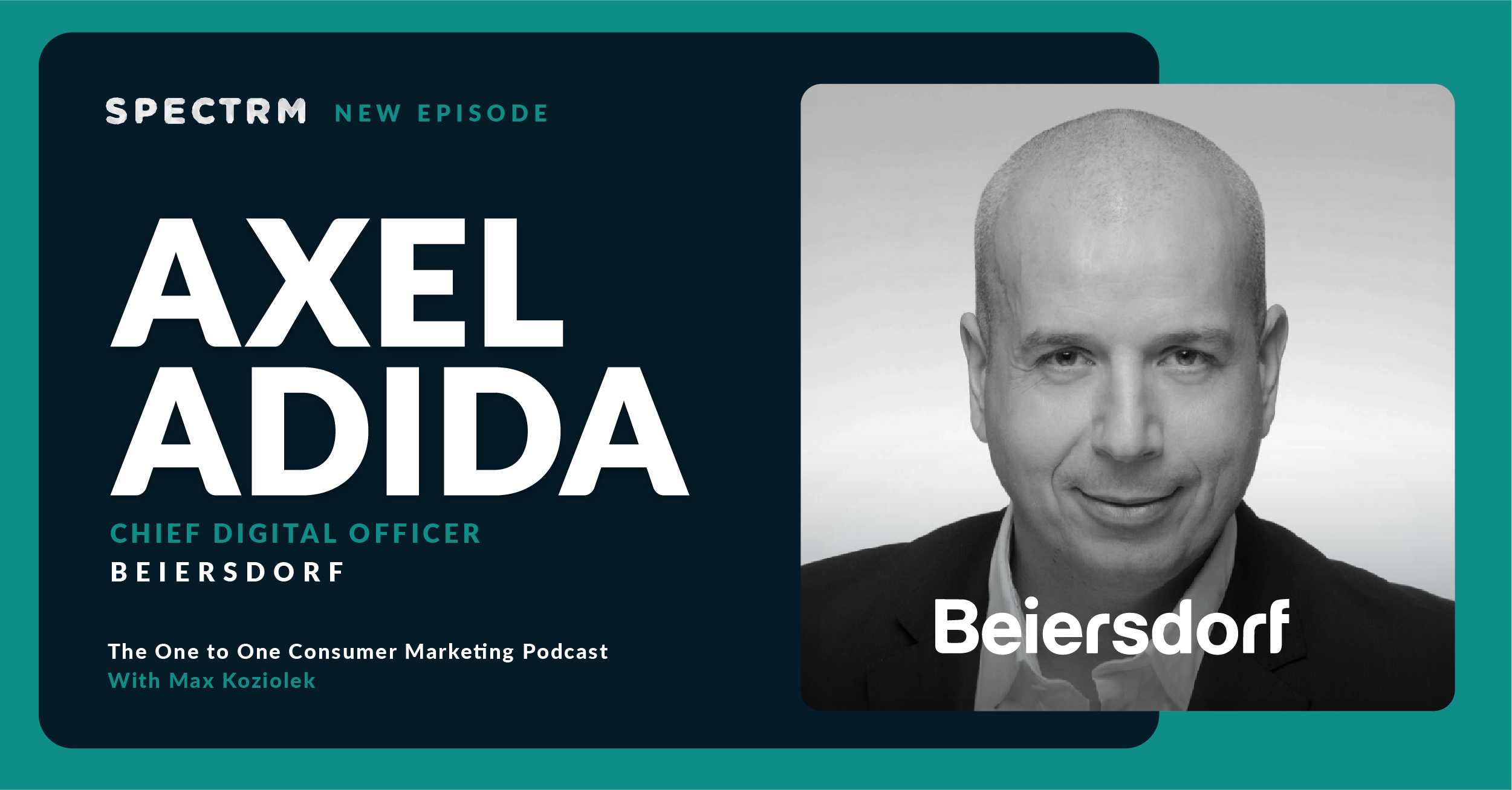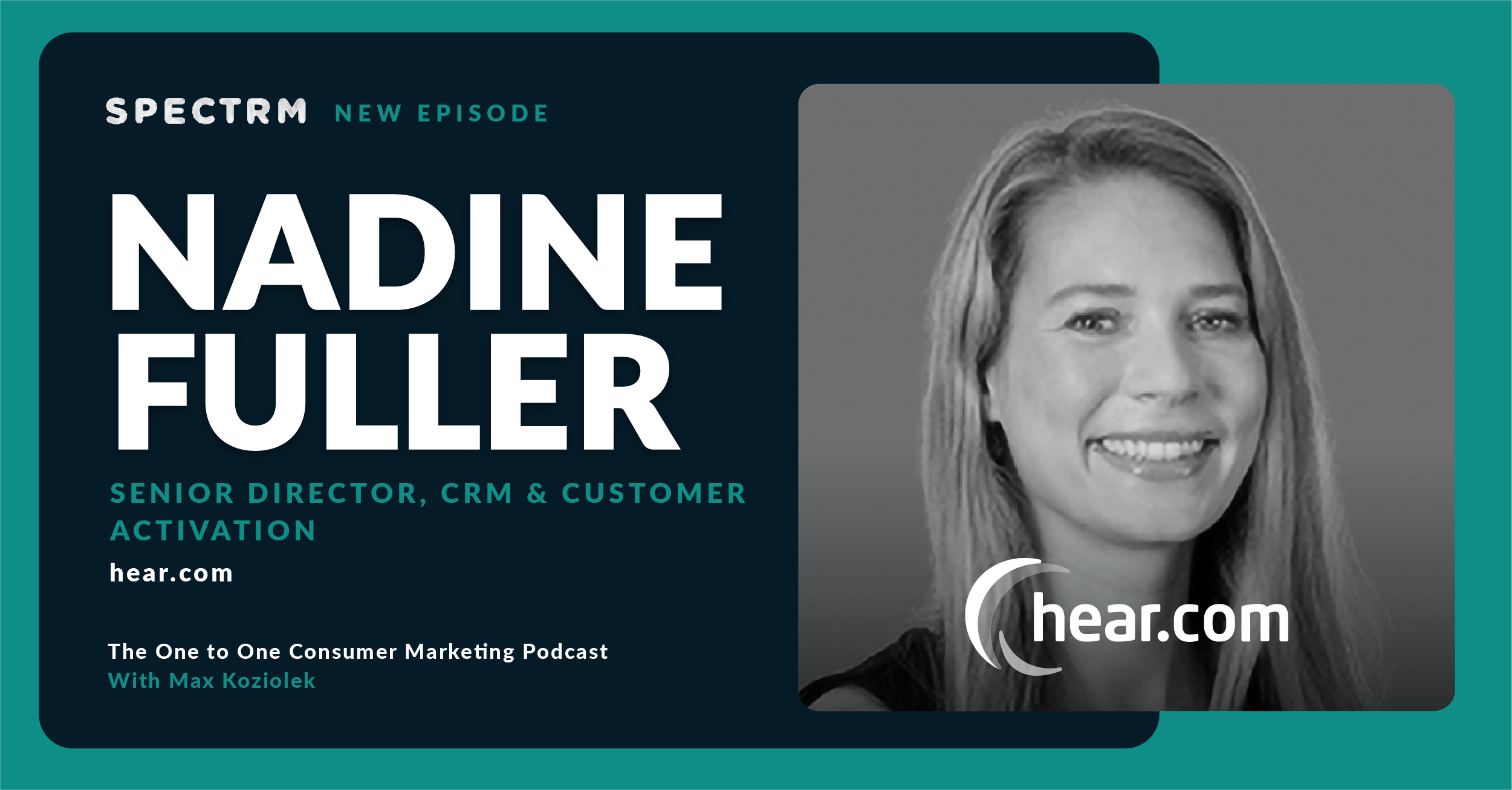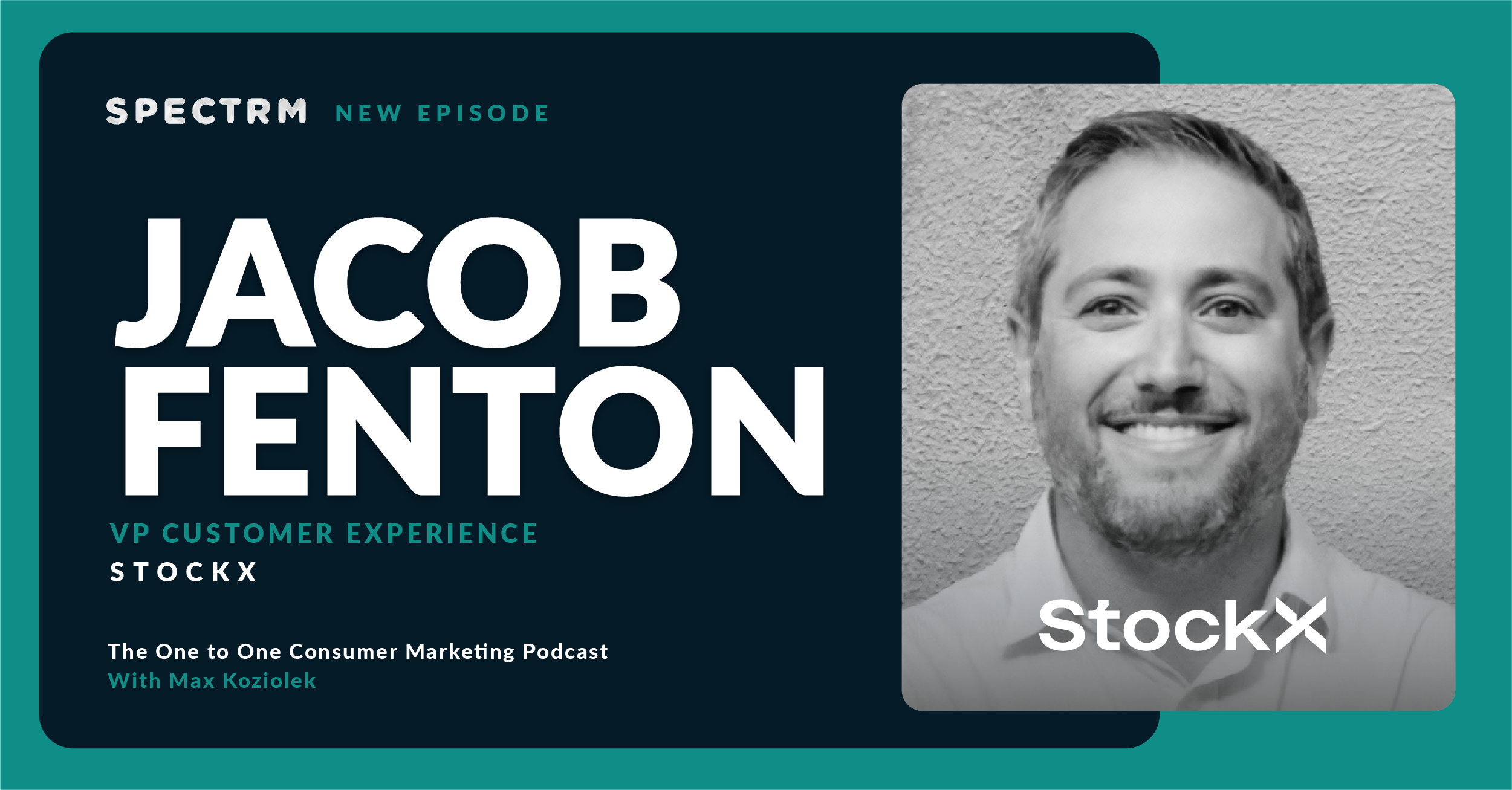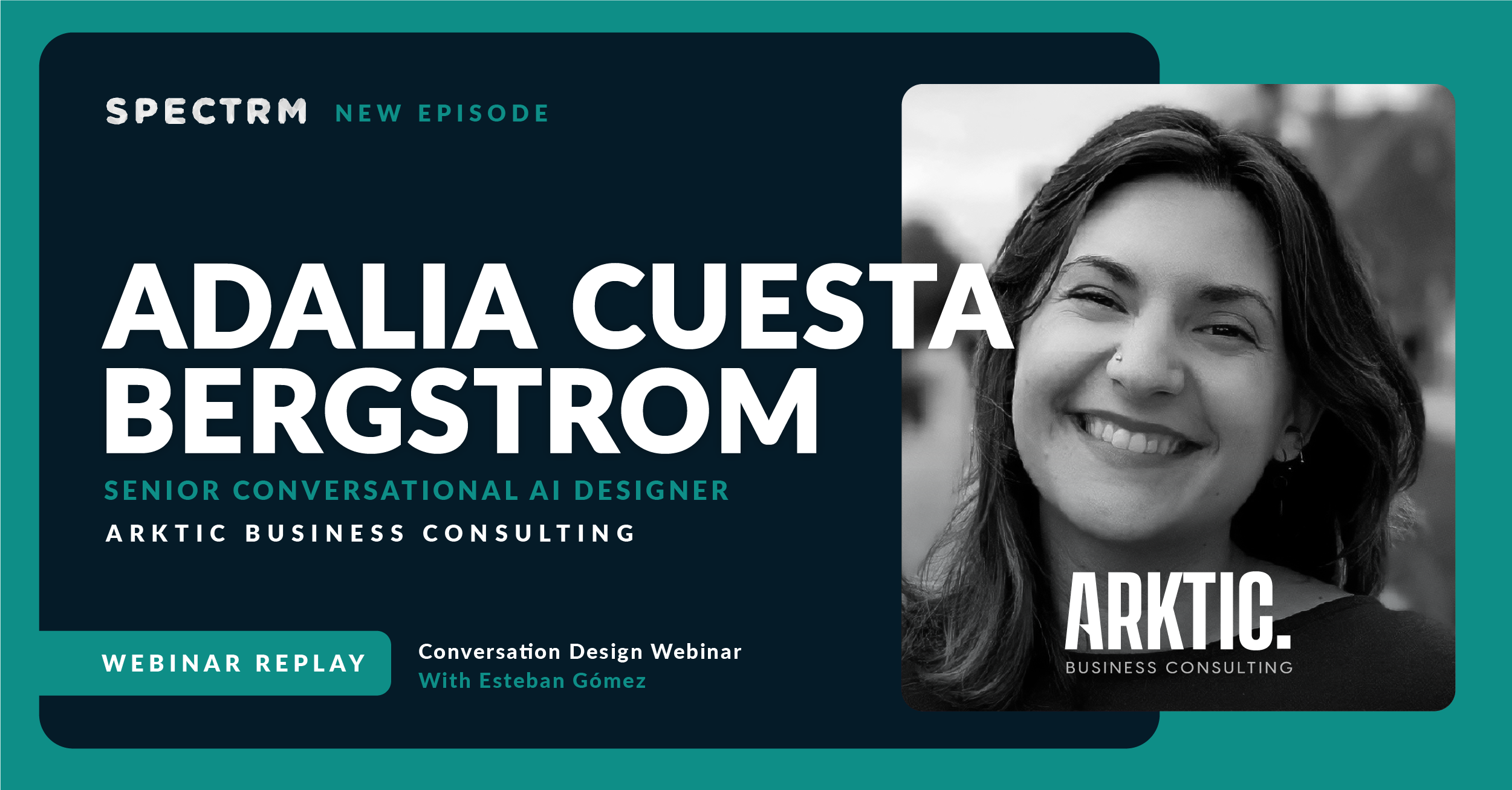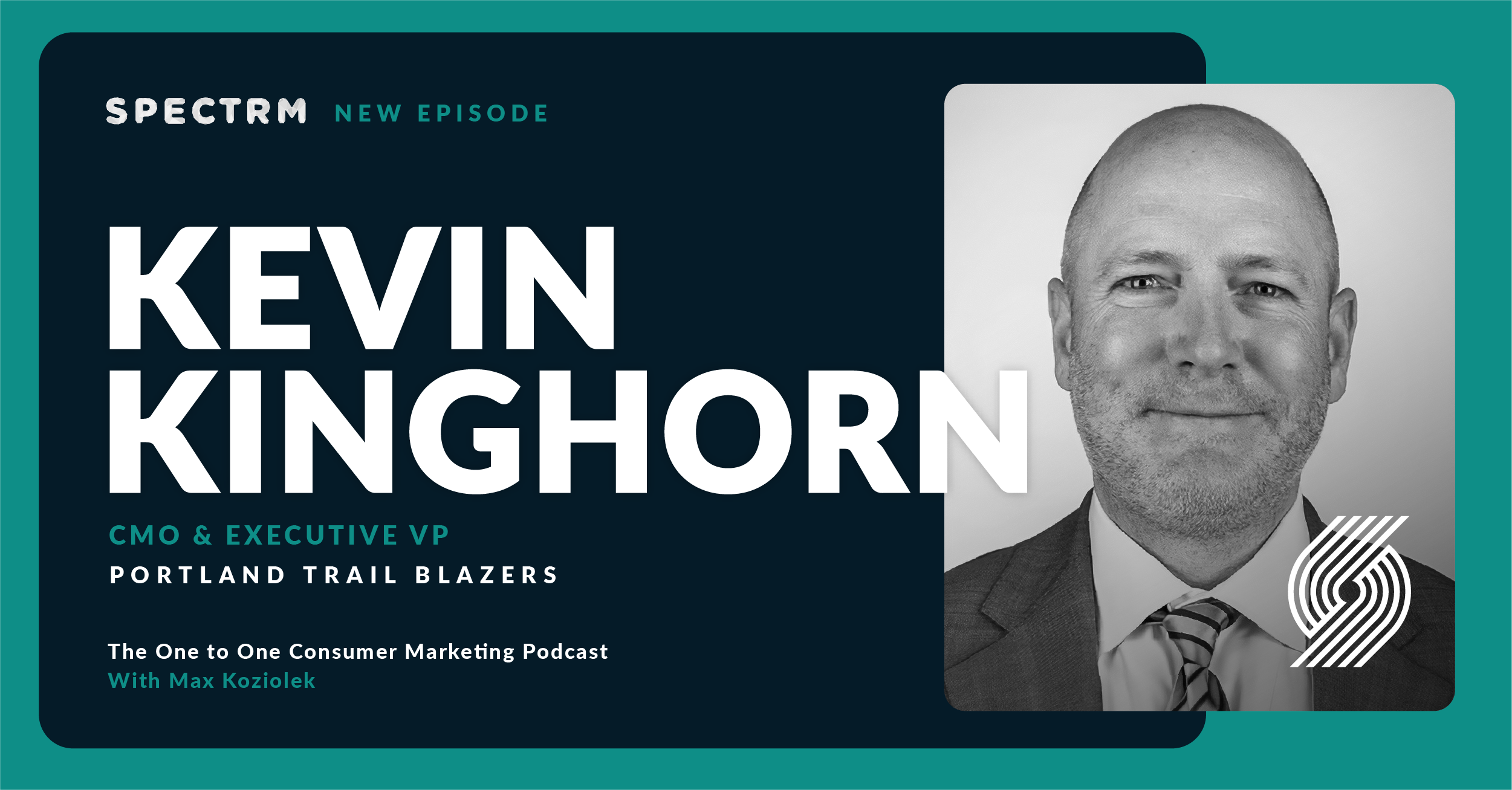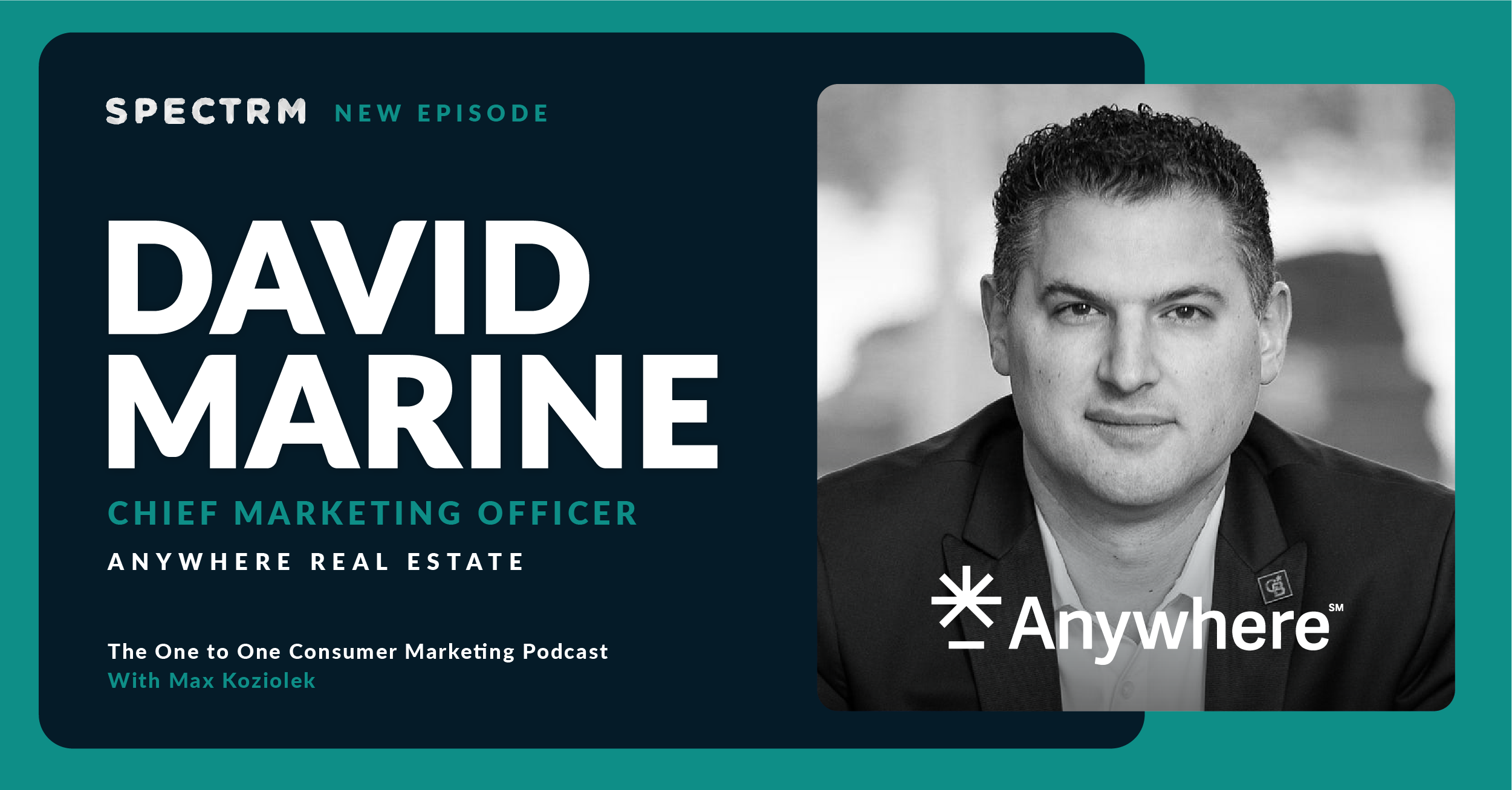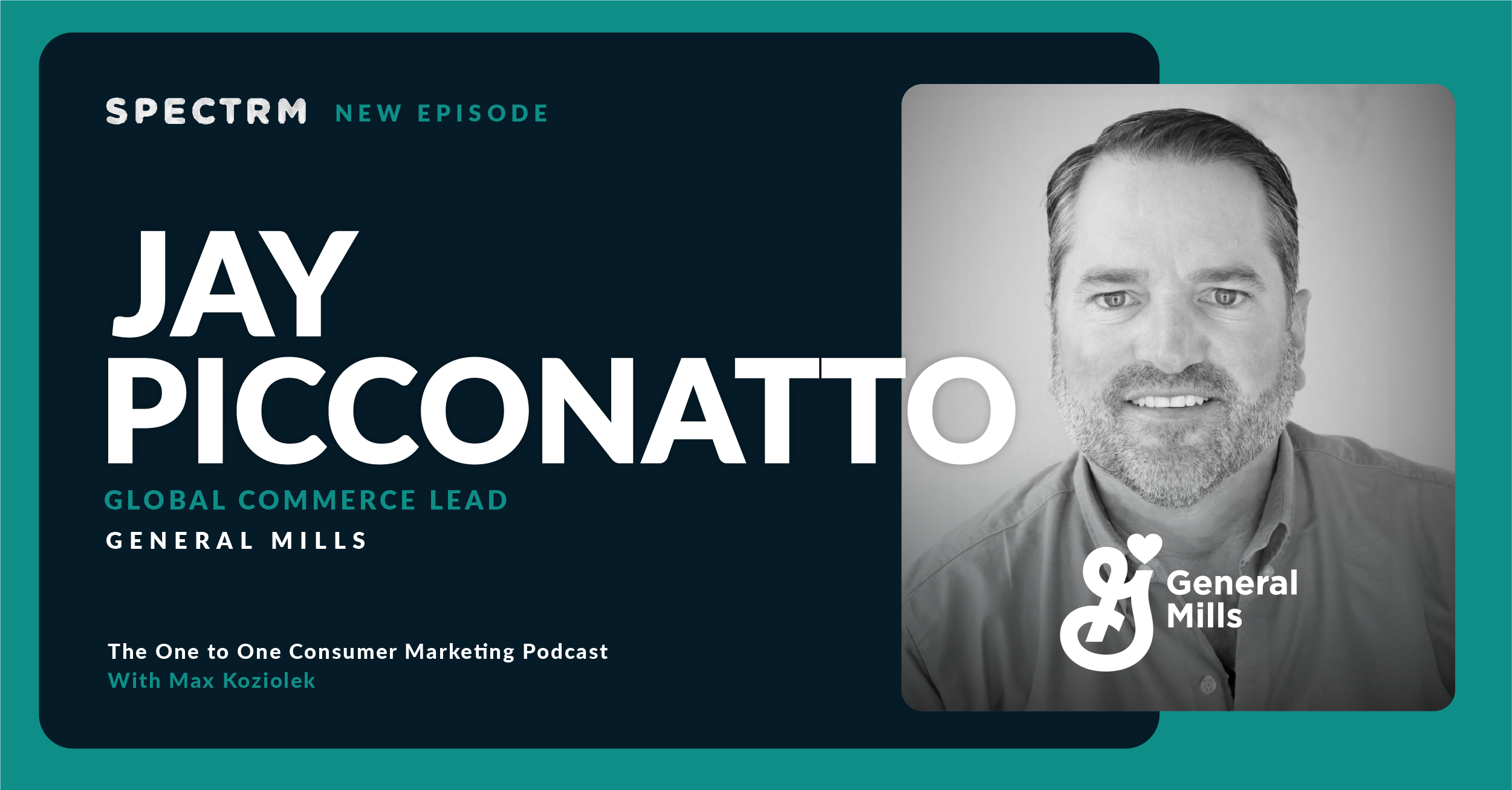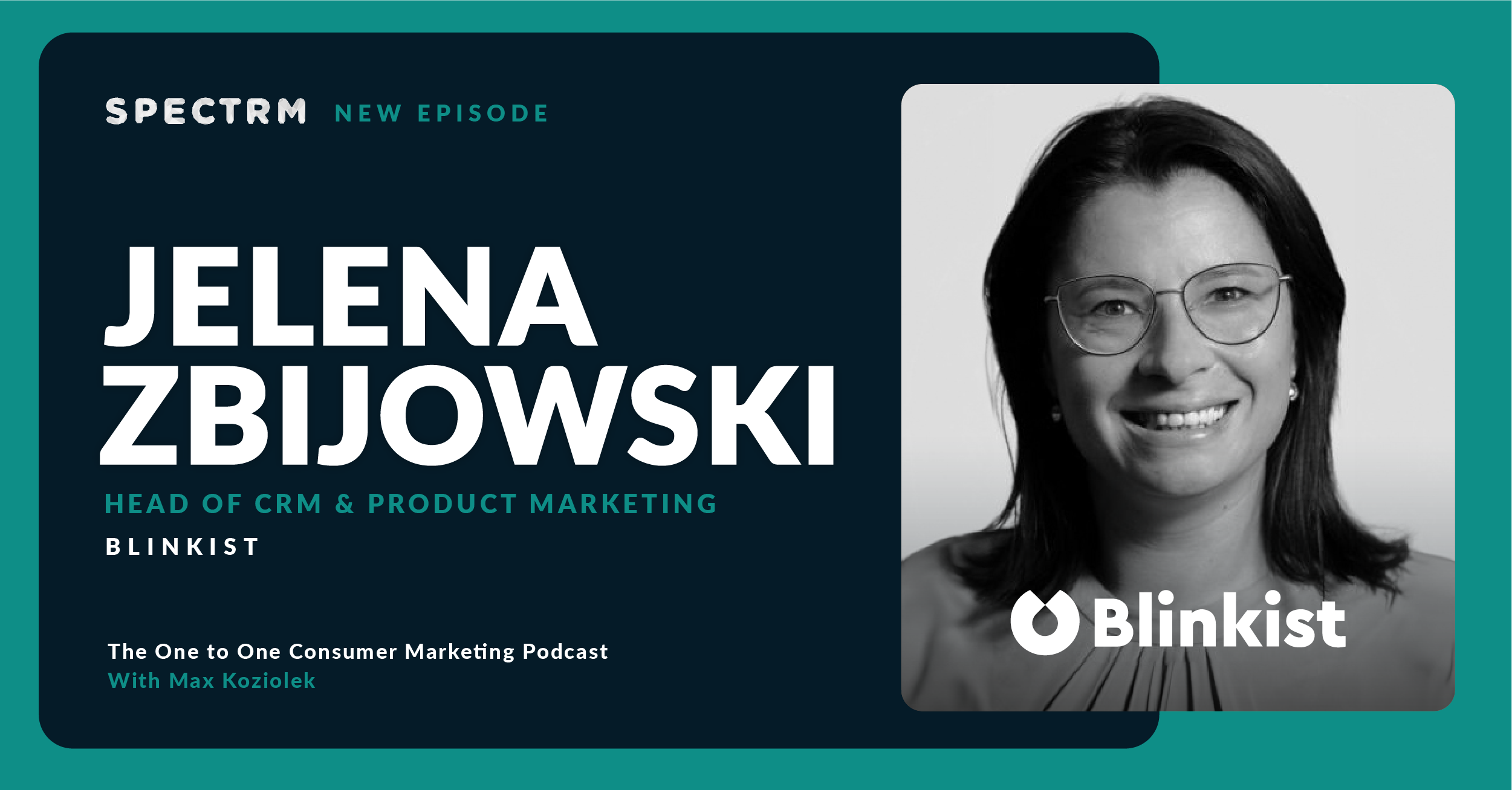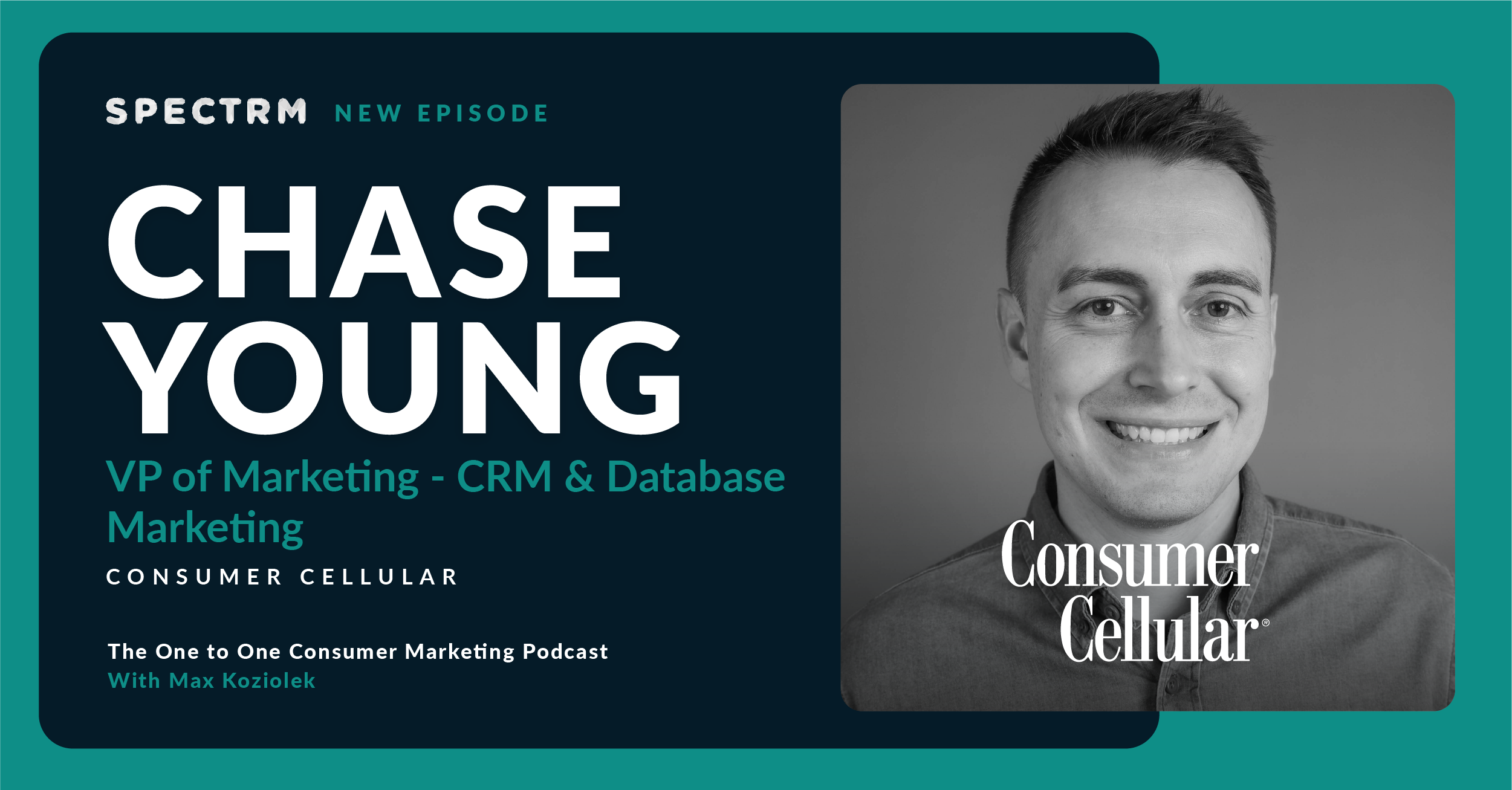Summary
On this episode of One-to-One Conversational Marketing, Ben speaks to INDOCHINO’s marketing director, Stephan Lukac about the current state of digital marketing and how to build relationships with customers in 2022.
When working in an industry that is dominated by e-commerce, Stephan discusses how the offline experience creates advantages that will never be matched by Amazon. If you want to learn about increasing customer lifetime value by combining digital customer acquisition with relationship building in person, then this episode is for you.
Topics discussed
- About Stephan and how he got to his current role at INDOCHINO
- The current state of digital marketing from Stephan’s point of view
- Adapting to a market that is controlled by Amazon by leveraging owned channels and the offline experience
- How podcast placements created success in customer awareness and acquisition
- The power of owning customer data and activating it for one to one personalization
- New challenges present in email marketing
- Top pieces of advice for marketers to generate demand
- Building one to one relationships with Meta’s messaging solutions
Guest biography
I think as we think about digital, it's really playing or working with those primary players and, hey, how can I diversify? How can I try to not be solely dependent on those two or three and reach customers in the multiple locations that they are?

- Paid Media Strategist | Digital Marketer | Agile Technology
Company overview
Indochino is North America’s #1 made-to-measure retailer with services in suits, tuxedos, casualwear, outerwear, and accessories for both men and women. Since 2007, Indochino has been committed to providing affordable custom wardrobes. By taking the luxurious made-to-measure experience direct to the consumer, we’ve created an elevated alternative to ready-to-wear.
Industry: retail apparel & fashion | www.indochino.com
Subscribe to the podcast newsletter
Transcript
00:00
Welcome to One to One: The Conversational Marketing podcast dedicated to helping modern marketing teams succeed in a messaging first and privacy first world. In each episode, we’ll interview a marketer who is winning with conversational marketing to distill best practices, lessons learned, and actionable takeaways. Here’s your host, Ben Gibert, VP of Marketing, Spectrm.
00:31
Ben Gibert
Hey, everyone, and thanks for listening to One to One: The Conversational Marketing podcast. I hope that if you’re in a heat wave somewhere all over the world that you’re managing to stay cool. I have an exciting episode for you today. I’m speaking with Stephan Lukac, who’s marketing director at Indochino. Stephan, thank you so much for joining today.
00:51
Stephan Lukac
Thank you, Ben. It’s a really real pleasure to be here. I’m excited to have a great chat.
00:55
Ben Gibert
Yeah. As I think I just said, but appreciate you joining early on the West Coast for you. Before we get started and dive into some of the topics we have up front, can you tell us about yourself, your background and how you ended up in your current role as Marketing Director at Indochino?
01:11
Stephan Lukac
Sure. Interesting story. Don’t kind of look at it, but I’m born and raised in Mexico in the first half of my life there, all the way up to the end of high school. From there I went to university in Boston, finished university and first job I ended up in or. The theme that I had after kind of doing my studies in anthropology was really around advertising. I ended up in an advertising agency there, working in the broadcast team kind of traffic, that’s what the role was called. Working within the digital team and that was the first foray into digital that spanned the rest of my career. Two years there, then moved back to Mexico and two years in Mexico. Also working within the digital domain, clients such as Nestle, Jaguar, Land Rover gave me a good understanding of kind of CRM strategies around that as well as kind of mass media.
01:58
Stephan Lukac
From Mexico, moved to Montreal here in Canada, where I was kind of pursuing my MBA in kind of part time MBA here and then full time consultant working in a variety of roles in Pfizer startup called Ice Diamond, which was really one of the first to go into the ecom space. Way back from there, moved on to TD. TD Bank is one of the largest banks here in Canada. Started in the insurance division, then moved across every single one of their divisions or business units. Always within marketing, but marketing, advertising, whether it’s direct advertising, one to one advertising, I kind of had an opportunity to try that in every single aspect in the TD domain. After finishing up there, started at Best Buy. I headed up all the digital marketing efforts at Best Buy Canada. Great time there. It’s a highly complex commerce and ecommerce type of organization.
02:53
Stephan Lukac
More than 120 SKUs that we had to kind of manage from paid search social as well as kind of the social moderation element of it. That was kind of my first exposure towards a large type of social moderation type of group. How do we do it, how do we approach and where? I saw some of the first forays into one to one type of communication on that domain and then I had an opportunity to head up Indocino’s marketing division. I head up everything from our acquisition efforts, retention efforts, PR, kind of myself and my team are kind of the go to group that really help the organization acquire new customers and retain those specifically. Indochino is a made to measure suiting company. The notion is that, hey, I need a suit. Come into one of our 87 different showrooms. Style guide there will be able to help you and kind of measure you and help you to choose the fabrics, the styles that you’re looking for and that’s sent to our factory.
03:45
Stephan Lukac
Everything’s laser cut, tailored in about two to three weeks. If supply chain is friendly with us, you’ll receive everything. A nice DHL box ready to go. Or if you need alterations, we’re more than happy to take care of those as part of our Fit guarantee.
03:59
Ben Gibert
Nice. Thank you for the overview. I want to start by saying I’ve actually been through that experience myself. It was a fantastic experience. I think also you’ve really nailed something in terms of getting kind of first time custom suit buyers in the door with your whole offering the custom measurements and things like that. I think it’s a great way to start the relationship and to offer value, which then kind of helps to continue that relationship too. I think the breadth of experience that you’ve also mentioned as far as your career is really interesting. It sounds like you’ve been through quite a few different consumer brands, both as working with them as clients or working directly for the brand as well. I’m sure you’ve seen a lot of things change in digital marketing over the last few years. I’d love to start there and kind of get a sense for you of what is the current state of digital marketing today and what have you seen change.
04:51
Stephan Lukac
So landscape obviously has changed significantly. I think that the COVID was definitely the accelerant within that. I think the landscape even prior to COVID was very much the same. Again, I’m looking at the landscape, I see three big peaks, so to speak. There’s the big Google. There’s the Facebook. The third one there believe it or not, is Amazon. More and more from a retail media perspective, they are absolutely dominating the space and I’m confident that this back to school that they’re just going to knock it out of the park and continue to erode the opportunities for every other retailer out there. The fourth more of a softer type of hill is kind of everybody else. Right. I think that there still is an important component of your MSNs, your Yahoos, your direct type of publishers and so forth that are starting trying to kind of make their way in kind of that larger type of domain and really try to establish themselves as well.
05:47
Stephan Lukac
I think as we think about digital, it’s really playing or working with those primary players and, hey, how can I diversify? How can I try to not be solely dependent on those two or three and reach customers in the multiple locations that they are?
06:03
Ben Gibert
Yeah, I think, like you said, that landscape has definitely evolved, and I like how you’ve categorized that. Right. Kind of the search, then social, then the marketplace, and then kind of the publishers themselves. I’d love to maybe let’s start there. You also mentioned kind of owning the relationship a bit more, trying to find different ways to reach and be where your customers are. Can you maybe walk me through how you’re tackling that? You mentioned Amazon particularly, and the rise of the marketplace and how they’re now dominating certain parts of the ecosystem as well. I think we’ve seen that as well with how much they’ve developed their ad products, their search products and stuff within the marketplace too. How do you kind of adapt to that?
06:39
Stephan Lukac
At Indochino very much, it’s all about the experience that exists, and that is a clear differentiator for us within Indochino. Right. What you get from an offline location, such as kind of my background, to be able to see, feel, and touch, to talk to a human being, to have those type of person to person type of interactions, is something that the convenience factor of ecom cannot supplant. You do need to go through that experience. So, look, if you want quick, cheap suit that you can get within a couple of days, great. Amazon’s your choice, right? If people are looking for that, whereas if you are looking for a quality made suit to your size, and to be able to choose and select some great type of fabrics at a quite modest price, Indochino is really kind of the place to go. That’s that value prop that we really stand behind and continue to push.
07:31
Stephan Lukac
Now, the advantage with our kind of business model is that, look, once we acquire that customer, your information is kind of kept with us, your measurements and so forth. And so it’s really easy. If you want a new suit, hey, it’s just a matter of click. We have your measurements so that you can choose a new type of fabric. Within that kind of two week, three week period, you’ll be receiving your suit there or after.
07:52
Ben Gibert
Yes. Is it fair to say you probably have a pretty strong customer lifetime value once you’ve acquired that customer?
07:57
Stephan Lukac
Yeah, pretty much. We’ve got those very strong type of customers that just are kind of really engaged and really enjoy, one experience and two, just the opportunity to easily get a suit and revise a suit, whether it’s a suit, let’s say it’s a shirt, all of a sudden this shirt, let’s see about getting a new one. And that’s really easy and straightforward.
08:17
Ben Gibert
Yeah, I love that. It’s the combination of experience on the acquisition side. That’s how you stand out from the crowd and then the data and the personalization that you have is also what helps you then retain them. I think it’s a great combo of both. Indochino is an interesting brand for me because I think you saw the growth of so many direct to consumer brands who really wanted to kind of own the customer relationship and who went fully online and fully into search social kind of display channels to acquire customers. We’re seen as kind of the death of brick and mortar retail, even though we all know that was a bit overhyped. I think Indochino is an interesting one because you combine the two very effectively, right? You have, I’m sure, a lot of digital acquisition channels. Then, like you said, the important touch point is also that personalized experience, the ability to go in store and actually touch the fabrics and interact with your Fitters and with the other staff.
09:09
Stephan Lukac
That you have, that’s exactly the case. Whereas before you could see organizations have like, okay, there’s online, there’s offline. The two are totally separate channels and totally independent. We know that the customer experience isn’t like that, right? Discovery occurs online. Clear, no question about that. That all of a sudden I get this. I’m going through my Instagram feed, for example, looking for ideas. Or in Pinterest, all of a sudden I’m like, oh, that’s really interesting. Let me find out more. Oh, Indochino. The search for Indochino. Go through the website. I’m like, oh, this looks interesting. Let me go to the mall right next door. Let me go and kind of check that out. Right. The discovery will continue to occur online, but our objective is to drive people to offline to the showroom so they can kind of see, touch and feel and have become a well honed machine as we have the ebbs and flows of part of our acquisition based on Legion.
09:59
Stephan Lukac
Right. I want to try to maximize the amount of appointments to each one of the particular types of showrooms and track those really carefully at the showroom level. I know which showroom is at capacity, lower than capacity, higher than capacity. Thus I can bid accordingly to adjust towards that. If all of a sudden my Georgia location is over capacity right now, great. Let me slow down a little bit. Kind of my marketing efforts there. It looks like LA has tons and tons of opportunity. Great, let’s shift those funds towards la effort and so forth and drive more visitation to that. We do that on a weekly basis, moving back and forth between our entire network.
10:38
Ben Gibert
That’s great. That’s a great example. I love that how the specific digital kind of budget optimization decisions are being made due to the limitations of what is happening offline as well and kind of almost the inventory there. Very great example. I mean, you mentioned acquisition, you mentioned some of the different channels in terms of discovery that you’re using. Can you talk to me a bit through kind of what channels you are using and which ones you’re seeing work well, which ones you’re seeing work less well these days.
11:06
Stephan Lukac
Yeah, after we finished COVID, we did, I don’t want to say purge, but definitely an optimization across all of our channels. Back in 2019, highly diversified type of media, so went to 2021. It was, I’d say polarized very much towards performance and now it’s, I would say more of a hybrid type of approach. We’re trying to diversify our media towards a broader group. There’s your search, two big search players there social, we play primarily within the meta domain. While we’ve tried Twitter, Pinterest, TikTok, the uptick and efficiency on those just didn’t work for us. We’ll play more than kind of the organic space with those on other type of channels. Podcasts is one that we’ve had great success with. It’s something that was at the core of what we did before and during COVID as listening habits and so forth really changed. We saw a great uptick on that front and so had a great in the door, so to speak, on the podcast type of realm.
12:03
Stephan Lukac
And so continue to really explore that. What’s great about podcasts, it helps both from an awareness perspective, but also from an acquisition perspective because the reads that occur there include a coupon code. We then use that coupon code to attribute back to the particular type of podcast and be like, okay, this podcast is more effective than this one. I can back it out to a CPA and quantify the value of each one of the podcasts. Perhaps the last channel that we’ve kind of explored and done really well is Connected TV. They’re partnered with an organization that provides really good type of attribution and a tool so we can see purchases occur and attribute that back to what’s the frequency of TV spots that they’ve kind of received? It’s two, is it seven, is it 20, et cetera, which are the ones that are most effective and so very similar to the YouTube or Facebook platforms, but now at a TV type of level.
12:56
Stephan Lukac
That’s something that’s really exciting because TV usage, especially Connected TV, obviously increased over COVID and so more and more time is spent there and it’s a less saturated type of space, at least for now. Some great opportunities on that one. I’d say the last one, and this is more on the one to one or direct front would be SMS. You don’t think SMS is that interesting or that innovative, but the SMS space is surprisingly growing. We jumped on the bandwagon and now it’s one of our most successful direct response, one to one type of communication tools from the ability to segment your audience, have conversations with those people and kind of push out our promotional campaigns. We’ve seen great success on that front and we’ll continue to grow on that domain as well.
13:44
Ben Gibert
Nice. Thank you for that overview. I think that’s a very good mix of channels that you talked about too. I like the podcast is one that doesn’t always come up. It depends kind of on it can be more of a leap of faith at first as far as the budgets and how quickly you can understand what’s going on. I like, yeah, obviously using the coupon codes is a good way to better attribute that. I think the rise of connected TV also an interesting one. I mean, you mentioned Attribution too. I’m sure that when you’re playing in so many digital channels and you see certain ones working well in certain one others, how are you doing the attribution thing? Are you going kind of last click? Are you trying to see like a multichannel mix and waiting that and trying to understand the full customer journey?
14:25
Ben Gibert
Can you talk to me about that?
14:27
Stephan Lukac
Yeah. Our approach is to really use three different data points for that. The first is a click journey and we use technology called Snowplow that looks at an entire click journey from acquisition all the way to where they click through our actual website until the actual event aggregates all of that coupon codes. The last one is we have a survey within both our lead gen as well as our sales funnel. How did you hear about us? Was it a search ad, was it a social ad, et cetera. We kind of combine those three things and a big type of Attribution type of thing can change the Attribution value. Right now it’s about a third. If I want to give more weight towards coupon, more weight towards the clickstream journey, I can do that at an individual type of channel level. What the system then spits out is at a channel level, what’s the CPA?
15:16
Stephan Lukac
It’s let’s call it a weighted CPA, not just solely based on the click type of journey, but also on both the coupon code redemption and the survey that occurs. What you’re doing there is kind of combining those three data points, the rich amount of click journey with the two other ones that also help to demonstrate that, hey, not everything is search. Not everything is that one that can benefit from that. Click journey and podcast for example, is where that’s where we saw really the benefit of podcast. We’ll continue to use a strong Attribution engine like that to give us a good sense of what’s working, what isn’t working and focus our efforts towards that.
15:56
Ben Gibert
Yeah, that makes a lot of sense. I’m always surprised how many marketers I talk to that also explain the more complex attribution methodologies that they use. At the end of the day, they also love relying on the where did you hear about us because it’s always the most reliable to some extent of what stuck in the mind of the customer too as far as what was that engagement that they remember the most as far as having heard about you. That’s a great mix and also the more, I mean still relatively, I guess more old school of just using the coupon code or like the specific offer code as a way of tracking the last touch or the most important touch too.
16:30
Stephan Lukac
Yeah, total old school, right? You’re just like God, who kind of does this. There are a lot of people again, there’s a benefit, right? You get $20, $30 off from kind of the sale. That’s enough to kind of incentivize somebody to remember the code and use the code in a particular type of instance. I definitely think that there’s value with that. The reads that we have are just fantastic for some of these of just highly engaged type of users of the indochino type of product. We always try to have our publishers kind of use and understand what the products are like and the reads just really help to emphasize what the brand is all about.
17:03
Ben Gibert
Yeah, that’s great and a good mix that it sounds like is working very well for you. I mean, you also touched one to one marketing. You mentioned SMS, I think personalization is a huge topic these days in digital marketing. Also doing that at scale is very difficult to operationalize. I’d love can you talk to me about what you’re doing at Indochino to connect one to one with kind of current and potential customers?
17:27
Stephan Lukac
Much of that revolves around the data, right? It’s funny, within my realm, I might be talking about photoshoot and look and feel very kind of subjective type of topics in one meeting and switch to the next meeting with it. We’re just talking about data structures and how everything is structured and where does the data flow, how do we ensure it to flow as effectively as possible? We do place a great emphasis on the data, on what we have in particular some of our email in particular elements where we do one to one really allow that notion of customization of the email component. How can we understand where the customer is within their journey and serve up kind of the right message at the right time. One example is our welcome message of a series of five different emails that will go from the welcome and the welcome is customized and personalized to the purchase that they made.
18:22
Stephan Lukac
Another example is, as a customer has been in the database for a while, we’ll have systems that kind of query and understand, okay, what is their last purchase? Based on that, make recommendations on hey, would you want to consider this product? Would you want to consider this product? Let’s say they just bought a suit within X amount of time. We then kind of make a recommendation for a shirt, throw in one of our shirt bundles. That’s a great opportunity to kind of remind the customer for this particular type of nuance. The last thing that we’re exploring right now is we have kind of daily newsletters that go out. Within that newsletter, there are several modules, and we’re exploring how do we customize each one of those modules based on the customers. Allow the email system to determine, okay, what’s the propensity of the customer to click on shirts, to click on the SMS module, to click on anything else that we have, and then leave it up to the algorithm to find.
19:13
Stephan Lukac
What that means is that the email that you’ll receive is somewhat different than Bob, than Max, than William, et cetera.
19:21
Ben Gibert
Okay, great. It’s almost like dynamic product recommendations based on kind of behavior within the email. I like that. Also the most obvious thing you could say, but that personalization is only as good as your data, right? You have to start with the data and how you collect that as well. It seems like you obviously have a great system for that, not just from the measurement standpoint, but also from an understanding of what types of products they’re buying and where they are in the journey. In terms of email, I’m curious, that’s always the kind of favorite channel for ecommerce marketers as far as retention and upsell game. Have you seen that decline with recent changes in mail privacy protection for Apple or the other things that are happening in the space?
20:02
Stephan Lukac
I wouldn’t say decline, they’re just kind of the challenges that you kind of hit along the way. September, October last year, Apple implemented. We saw that change in our open rate. We’re like, whoa, we’re high fiving each other saying we’re doing a great job, the open rate is going up. I’m like, wait, this is really strange. After looking around two or three weeks later, I realized, no, this isn’t us, this is Apple that implemented kind of their new tracking or privacy type of effort. Open rate is no longer an effective year over year type of metric, but I can compare period over period. That gives me a relatively good indication. The other type of metrics, your click through rate, conversion rate, ratios of users to activities still hold and still gives us a sense of kind of the success of this. What we’re seeing is that no, it is still an effective channel and we will continue to explore that.
20:53
Stephan Lukac
Again, I’ll bring SMS to the forefront here. It’s small but mighty, right? Our list is small, but we continue to kind of push and grow and one of our hopes is to incorporate that at the acquisition level. How do we then push more towards SMS and build that? That would also be another great type of opportunity. Within SMS, the same type of capabilities and segmentation and personalization that occurs in email can also occur with SMS from cart abandonment emails, that’s kind of a standard type of thing. We do that from an SMS perspective. So Pixel sits in our cart. If a person’s been identified and we have their telephone number, great. You’ll get an SMS saying hey Stefan, I saw that you were in our cart looking for this particular type of suit. Would you consider buying it right now? Great. I mean, the notion of SMS is that it’s mobile, there’s an immediacy to it and just very easy to kind of click and then great purchase is complete there.
21:43
Ben Gibert
Yeah, that’s definitely also the space that at Spectrm we’re operating in the one to one kind of messaging space that we’ve seen a lot of the same success. The things that you’re talking about, right? The immediate kind of personalization of the data aspect and the ability to use that data to then really change how you’re reaching out when you’re reaching out to people and to create that very one to one kind of customized journey. I mean, I’d love to. For you at Indochino, what does one to one kind of conversational marketing mean to you?
22:11
Stephan Lukac
I’d say it’s kind of two different fronts. One is I’ll call it kind of social moderation one to one and the other would be marketing direct messaging kind of one to one. Let’s explore first the kind of social moderation here. It’s basically working on the platforms, whether it’s on Instagram, Direct, Facebook, any one of those. Our Customer Experience Team works really closely with us to have that conversation, understand the particular type of customer needs and consider each one of those as a selling type of opportunity. Again, a lot of them veer into the customer service type of realm. Hey, I haven’t received my suit yet, where is it? Here’s my tracking. I’m a great, let’s help you do that. At the conclusion of that, what can we do at that time or in the future to then reach out to that customer and say hey, is everything good since you received your suit?
23:02
Stephan Lukac
Would you be interested in this shirt? Here’s some great ideas and examples for you. Within that, our Customer Experience Team does a great, great job of much of the social moderation, jumping in there on a daily basis, understanding customer needs, addressing the customer needs, and then potentially doing an upsell on that front. On the direct side, I’ll call that the email and SMS. It’s an opportunity for us to kind of take our data, customer data, go through it, find the segments, and then push out those messages towards each one of those segments to kind of maximize the returns.
23:35
Ben Gibert
Yeah, I love you’re ahead of a lot of marketers. I feel like that I’ve spoken too when you mentioned seeing that as a selling opportunity. Right. The social moderation aspect. Many people, so many brands see social messaging or just messaging in general as very much deflection and customer service. Just the fact that you said that shows that you’re clearly thinking of this as an opportunity, as a way to improve the customer experience to make a sale. Even though, like you said, there might be a lot of customer service related inquiries through there, whether it’s order related or even maybe a pre sales kind of customer service inquiry, that there’s always an opportunity to upsell after once you’ve also made the connection and provided that great experience on the channel. I think that’s amazing to hear you that you’re thinking in that space already and that you’re also kind of making that distinction between the moderation aspect, I guess, incoming, almost like inbound versus outbound messaging, and the way that you’re dealing with that.
24:32
Ben Gibert
I think everyone talks about marketing trends. There’s always a lot of changes going on in the digital marketing space, which I’m sure you have experienced in spades with the time that you’ve spent in the industry. What to you is kind of one of the most exciting developments that’s going on right now.
24:46
Stephan Lukac
One of the interesting ones. I thought I could actually kind of share my screen and kind of walk you through this is Meta is always pushing out new types of products. Not to say as a marketer, you kind of become immune to this, but yes, you become immune to this. It’s beyond a constant type of product. New product here, new product there. Much so that I am terrible at product names. I’m like, yeah, you know that doohickey that does this and this, and my team’s just like Stephan, it’s called this. Yeah, okay. In any case, Meta came up with a new way to kind of consolidate their multiple type of opportunities. In the past, what they had was Instagram in one place, Facebook in another, your pages here, your WhatsApp here. Now with kind of the new move towards Meta, they’ve kind of created this all in one type of inbox, which I think is great, but I think most interest here, Shayna is an employee, so that’s why I’m kind of using her as an example.
25:38
Stephan Lukac
Thank you, Shayna. In this case, at a glance, I can just get information about her, about the particular profile, add labels, add notes and just really create a richer type of experience than what we have available right now. Again, there are many companies that offer this but the fact that Meta is now offering this for free as part of just using the Meta platform I think is really powerful. I was trying to find an example, couldn’t find it, but one of the other labels that pops up here is exposure to ads, which I thought was absolutely fascinating. They also are tracking and making that visible to advertisers, of exposure to ads. You can add that to the label. The other kind of tell that I see here is just the proximity of automations. Right. The way that I see it is that Meta will encourage advertisers more and more to use automations to have this chat directly with the person.
26:33
Stephan Lukac
Write your own script in a very easy to use type of format to be able to engage and speak directly with the customer, but using the AI bot for 80% of the discussions and when you need to move towards those chats with a person we’ve been experimenting with it. It’s still nascent to say the least. There’s nothing worse than the intro chat bot bumping in a follow up chat, saying hey, thank you to Indochino and the guy’s like I’ve already introduced myself here, like clearly this is the chat bot, so we saw that happen. No, not doing this anymore. All to say is I see that to be really exciting of Meta in particular kind of creating that unified type of space, that’s one where all those kind of platforms start to coincide in one place and again. The opportunity to kind of create more customer data at a customer type of level and then to then automate that based on tags, labels and so forth, I think is a really exciting type of prospect within kind of the one to one space.
27:37
Stephan Lukac
Again, it’s moving towards automation. You’re not going to be able to kind of ramp up to have a chat with everybody, but it’s that combination of creating labels and automation I think that holds some exciting promise.
27:47
Ben Gibert
Yeah, you touched on so many things there, Stephan, that I’d love to unpack because I think it is a very exciting development. Obviously I am very biased coming from the messaging space but you highlighted something and I love the screen share as well to show that I think Meta has talked a lot about unifying the infrastructure. That WhatsApp messenger and Instagram are running on. That was kind of their first step and now they’re really rolling out products to bring all of those together. Like you said, automation is kind of front and center of that and also the data capture aspect, right. Labeling, understanding who your customers are, what they’ve seen. I think those are all things we work as a global business messaging partner with Meta, so we’ve been kind of very involved in helping to develop some of this and also we use our own platform for this.
28:32
Ben Gibert
I think that’s where a lot of the interesting stuff from a social perspective is going too, because there has been that shift on social of kind of getting locked out of the insights, right? Like you just run campaigns and Facebook optimizes based off of the conversion events and more and same thing on Google, right? It’s like trust the algorithm. Trust the algorithm, go automatic, let it do its optimization. I think what messaging and one to one offers you is use those platforms but own that data. Like own the relationship again between your customers, which I think is so exciting. I think you’ve touched on some really good things there too. I think the customer experience part too, that you mentioned, automation is great, but it’s only great if it provides an amazing customer experience. You need to have that seamless handoffs between maybe your Customer experience team and the bot and you don’t want the bot to come back in without the context of what’s happened with the customer experience team.
29:27
Ben Gibert
I think those are all things that we’re seeing when we work with global brands, that those are the challenges that they’re facing. They really want to focus in on that experience and make sure they maintain it while introducing some of the automation that enables the kind of scale that they’re looking for. So, yeah, I really love that screencast. Thank you for that. I think as we look forward and try to wrap things up a little, what for you are the top three pieces of advice that you would give other marketers that are trying to kind of meet consumers where they are and kind of capture demand or generate demand.
30:01
Stephan Lukac
I think one piece would be always test, right? I know that becomes trite to a degree, but I can’t stress that enough, right? With that comes keep an open mind. Too many marketers are kind of fixed on like, wow, this has worked in the past and this is the approach and what we need to do moving forward. It’s like, look, the space changes so frequently, so much that you just kind of really need to keep an open mindset towards that and continuously test, try different things. If it worked last quarter, then maybe it won’t work again this quarter because things are changing so quickly within the landscape. Second, always learning. There was, I guess this notion of at least when I was younger, of directors and directors ask team members to do things, so to speak. I think Indochino us as directors are always learning.
30:53
Stephan Lukac
We’re always in platform, we’re always hands on each one of the things to see how they work, how to interact with them, how to make them work better, and then working with our teams to say, well, I found this really interesting type of functionality. We considered this and this. Oh, that’s a really good point. Right. I think the notion of more senior leaders being detached from the product itself is terrible. Senior leaders need to be in those products to a degree.
31:21
Ben Gibert
Right.
31:22
Stephan Lukac
I’m not saying run all your Facebook campaigns yourself, but it’s definitely you do need to be in the product and understand what’s there, to use your experience and be able to pass that and challenge your team to push the envelope, to maximize the tools at our disposal to kind of make that happen. The last kind of, I think, kind of recommendation is this notion of creativity, right? I can’t stress enough the art and science of marketing data is important, absolutely critical. From that data come the insights and the story that comes out of that. How do you tell that story in a way that captivates your stakeholders and motivates them, gets excited and interesting. That’s a craft that we’re continuously trying to grow and develop. Once you have those insights, how do you act upon them as effectively as possible and using different creative type of approaches?
32:13
Stephan Lukac
Not the ads themselves, but it’s like, hey, what are the creative solutions that we have to using the data, how the data flows to make it as effective and efficient as possible?
32:23
Ben Gibert
Yeah, those are great pieces of advice. I think that last one links well with your second one too, which is understanding the data and being having creative insight to it or telling the story based on that is something where being a more senior experienced leader can really help with that. Also having a fresh set of eyes can really help with that too. I think it’s that combination of things that can yield the most value for the brand. I think testing is one that comes up every time, but I think it just speaks to how important it is to test and then to learn from that testing. I really think your second point just really rings true to me too, that being not so hands off as you rise in the ladder, so to speak, that you lose touch with what’s possible. Because ultimately your experience can also really help guide the people that are working with you to help generate the most value too.
33:11
Ben Gibert
I think all fantastic pieces of advice for marketers out there and let’s end oh, there we go. Perfect timing. My little light that shines on my face turned off right towards the end of the episode for you. What is the future of marketing look like for consumer brands like Indochino?
33:31
Stephan Lukac
I think the future just becomes more and more towards automations. Right? I really want to ensure that they’re human powered type of automations. Right. I think absolutely critical to be able to understand the data, understand the particular type of use, case and scenario and how do we solve customer problems as effectively as possible. Using those automations, using the data at hand to improve the customer experience. I think that is first and foremost kind of the goal and objective within marketing and so just more and more opportunities that arise around that. It’s going to be exciting to get to kind of see, thinking about. Again, this should be the norm of marketers, but putting yourself in the customers shoes, looking at the particular type of experience and how can we improve that experience as effectively as possible to then maximize the return that we’re going to get out of that.
34:23
Ben Gibert
Yeah, I think in a world where it’s going to be more and more competition and more information is available to consumers online as well. And more choices available it will be. Customer experience is always going to be the competitive edge, the deciding factor, and where they choose to spend as well. I think that’s a great way to finish. I also love that term human powered automation. I think that’s so key is not letting automation run rampant and reminding yourself that humans are the people you’re trying to get to buy. To make sure that humans also have some oversight and can guide the process because that’s how automation is most effective. Steven, I’ve really enjoyed this conversation. That’s all we’re going to have time for today, unfortunately. I feel like there’s so many topics we could talk about. If people want to follow your journey and learn more about what you do, where should they go?
35:13
Stephan Lukac
LinkedIn is a great place. I’ve been blessed with a last name that’s somewhat unusual. Luke. So, Stephan Lukac, you can look me up in LinkedIn. Pretty easy to find and more than happy to kind of connect and chat more, right? Well, you get a lot of sales pitches there. There are one or two people that’s just, hey, I just want to chat. Great, let’s chat. Let’s strike something up a little bit. And I really kind of value that. Feel free to reach out to me on LinkedIn.
35:37
Ben Gibert
Great. So, yeah, you heard that. Also, I have to apologize for mispronouncing your last name at the start of the episode. Is that I’m against for everyone. I’m sure you get it a lot. I get it all the time too. But yeah. Thank you so much for sharing your insights. I’m really looking forward to seeing how you execute that vision at Indochino. Just a quick reminder to our listeners, if they want to learn more about you, to check out LinkedIn. If they want to follow the podcast, to do that on Spotify or Apple podcast or wherever you get your podcasts. If you want to learn more about conversational marketing to go check out Spectrm.io or follow us on LinkedIn to get more insights like the ones that Stephan has been sharing with us today. Thanks so much for listening. I hope you stay cool in the heat.
36:22
Stephan Lukac
Thank you very much. Take care, everyone.
